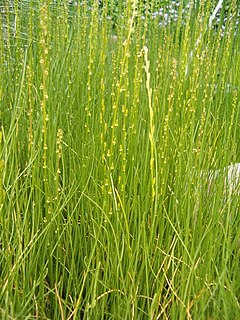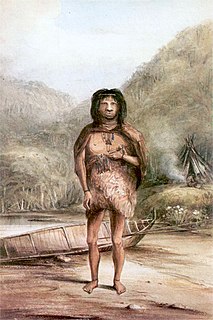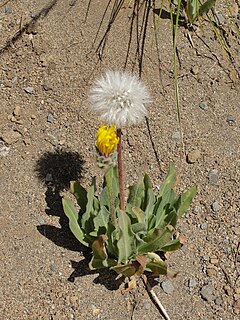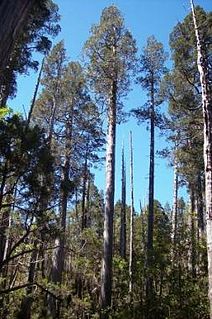
Tierra del Fuego is an archipelago off the southernmost tip of the South American mainland, across the Strait of Magellan. The archipelago consists of the main island, Isla Grande de Tierra del Fuego, with an area of 48,100 km2 (18,572 sq mi), and a group of many islands, including Cape Horn and Diego Ramírez Islands. Tierra del Fuego is divided between Chile and Argentina, with the latter controlling the eastern half of the main island and the former the western half plus the islands south of Beagle Channel. The southernmost extent of the archipelago is at about latitude 55 S.

Ushuaia is the capital of Tierra del Fuego, Antártida e Islas del Atlántico Sur Province, Argentina, and the southernmost city of the country. Ushuaia claims the title of world's southernmost city. Ushuaia is located in a wide bay on the southern coast of Isla Grande de Tierra del Fuego, bounded on the north by the Martial mountain range, and on the south by the Beagle Channel. It is the only municipality in the Department of Ushuaia, which has an area of 9,390 km2 (3,625 sq mi). It was founded on October 12, 1884 by Augusto Lasserre and is located on the shores of the Beagle Channel surrounded by the mountain range of the Martial Glacier, in the Bay of Ushuaia. Besides being an administrative center, it is a light industrial port and tourist hub. Ushuaia is located roughly 1,100 kilometres (680 mi) from the coast of Antarctica and 245 kilometres (152 mi) from the Chilean city of Punta Arenas.

Tierra del Fuego is the southernmost and least populous Argentine province.

The Magellanic subpolar forests are a terrestrial ecoregion of southernmost South America, covering parts of southern Chile and Argentina, and are part of the Neotropic ecozone. It is a temperate broadleaf and mixed forests ecoregion, and contains the world's southernmost forests.

Prior to 2002, Antarctica had no flag, as the condominium that governs the continent had not yet formally selected one. The consultative members of the Antarctic Treaty System officially adopted a flag and emblem in 2002, which is now the official symbol of the continent. Several unofficial designs have also been proposed.

Triglochin is a plant genus in the family Juncaginaceae described by Carl Linnaeus in 1753. It is very nearly cosmopolitan in distribution, with species on every continent except Antarctica. North America has four accepted species, two of which can also be found in Europe: Triglochin palustris and Triglochin maritima. Australia has many more.

Abrotanella is a genus in the family Asteraceae, of 22 species, native to Australia, New Zealand and southern South America.

Fuegians are one of the three tribes of indigenous inhabitants of Tierra del Fuego, at the southern tip of South America. In English, the term originally referred to the Yaghan people of Tierra del Fuego. In Spanish, the term fueguino can refer to any person from the archipelago.

The flora of the Faroe Islands consists of over 400 different plant species. Most of the lowland area is grassland and some is heather mainly Calluna vulgaris. The Faroese nature is characterized by the lack of trees, and resembles that of Connemara and Dingle in Ireland.

Agoseris is a small genus of annual or perennial herbs in the Asteraceae or sunflower family described as a genus in 1817.
Oedipodium is the only genus of moss in the family Oedipodiaceae. It contains the single species Oedipodium griffithianum, the gouty-moss or Griffith's oedipodium moss. This species is distributed in cooler climates of Eurasia, as well as from Alaska, Washington State, British Columbia, Yukon, Greenland, Newfoundland, Tierra del Fuego and the Falkland Islands.
The South American Mission Society was founded at Brighton in 1844 as the Patagonian Mission. Captain Allen Gardiner, R.N., was the first secretary. The name "Patagonian Mission" was retained for twenty years, when the new title was adopted. The name of the organisation was changed after the death of Captain Gardiner, who died of starvation in 1851 on Picton Island in South America, waiting for a supply ship from England. Gardiner thought that the original mission should be expanded from southern South America (Patagonia) to all of South America. Charles Darwin is reported to have supported the society financially and rhetorically.

The Antarctic Floristic Kingdom, also the Holantarctic Kingdom, is a floristic kingdom that includes most areas of the world south of 40°S latitude. It was first identified by botanist Ronald Good, and later by Armen Takhtajan. The Antarctic Floristic Kingdom is a classification in phytogeography, different from the Antarctic realm classification in biogeography, and from Antarctic flora genera/species classifications in botany.

The Boundary Treaty of 1881 between Argentina and Chile was signed on the 23 July 1881 in Buenos Aires by Bernardo de Irigoyen, on the part of Argentina, and Francisco de Borja Echeverría, on the part of Chile, with the aim of establishing a precise and exact borderline between the two countries based on the uti possidetis juris principle. Despite dividing largely unexplored lands, the treaty laid the groundwork for nearly all of Chile's and Argentina's current 5600 km shared border.

Agrostis magellanica is a species of grass. It has a circumpolar distribution and is native to many subantarctic islands in, and the coasts bordering, the Southern Ocean.

Tierra del Fuego National Park is a national park on the Argentine part of the island of Tierra del Fuego, within Tierra del Fuego Province in the ecoregion of Patagonic Forest and Altos Andes, a part of the subantarctic forest. Established on 15 October 1960 under the Law 15.554 and expanded in 1966, it was the first shoreline national park to be established in Argentina.

The Flora Antarctica or formally and correctly The Botany of the Antarctic Voyage of H.M. Discovery Ships Erebus and Terror in the years 1839–1843, under the Command of Captain Sir James Clark Ross, is a description of the many plants discovered on the Ross expedition, which visited islands off the coast of the Antarctic continent, with a summary of the expedition itself, written by Joseph Dalton Hooker and published in parts between 1844 and 1859 by Reeve Brothers in London. Hooker sailed on HMS Erebus as assistant surgeon.
The Flora of Fuegia, the Falkland Islands, etc. is a description of the plants discovered in these islands during the Ross expedition written by Joseph Dalton Hooker and published by Reeve Brothers in London between 1845 and 1847. Hooker sailed on HMS Erebus as assistant surgeon. It was the second in a series of four Floras in the Flora Antarctica, the others being the Flora of Lord Auckland and Campbell's Islands (1843-1845), the Flora Novae-Zelandiae (1851–53), and the Flora Tasmaniae (1853–59). They were "splendidly" illustrated by Walter Hood Fitch.
















